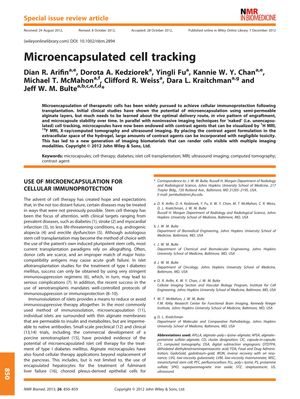Microencapsulated Cell Tracking
December 2012
in “
NMR in Biomedicine
”
androgenic alopecia microencapsulation cell therapy therapeutic cells immune system MRI CT/X-ray ultrasound imaging X-capsules magnetocapsules fluorocapsules ¹⁹F MRI GadoGold capsules multimodal imaging hair loss microcapsules cell treatment immune protection magnetic resonance imaging computed tomography X-ray ultrasound X-ray capsules MRI capsules fluorine MRI GadoGold

TLDR Microencapsulation helps protect and track therapeutic cells, showing promise for treating various diseases, but more work is needed to improve the technology.
The document reviewed the use of microencapsulation in cell therapy, focusing on the protection of therapeutic cells from the immune system and the tracking of these cells post-transplantation using various imaging techniques. It highlighted the potential of this technology in treating diseases such as diabetes, stroke, myocardial infarction, and androgenic alopecia. The review detailed the creation of microcapsules with contrast agents for MRI, CT/X-ray, and ultrasound imaging, and discussed specific advancements like X-capsules for X-ray and CT imaging, magnetocapsules for MRI, fluorocapsules for ¹⁹F MRI, and GadoGold capsules for multimodal imaging. A study involving diabetic mice showed that capsule-in-capsules (CICs) normalized blood glucose levels for at least 75 days and could be visualized in vivo for up to 3 months, with cell viability within the CICs at 55% after 4 months. The document concluded that while imaging is useful for tracking, it does not assess cell function, and further research is needed to optimize the technology.



